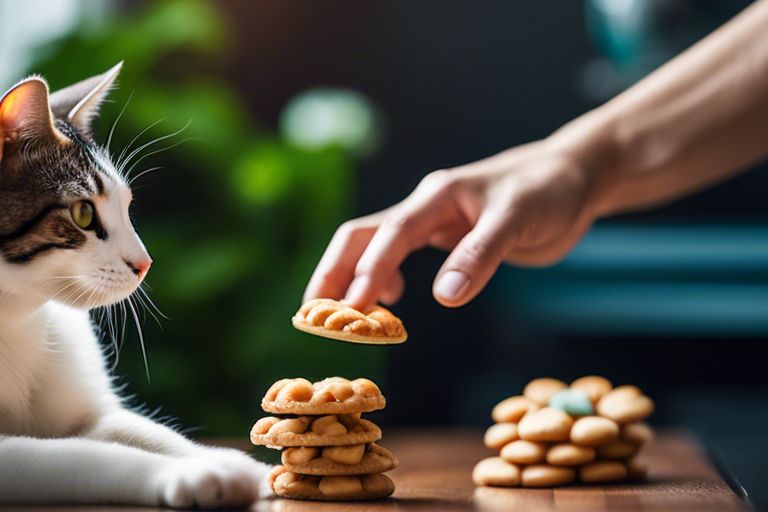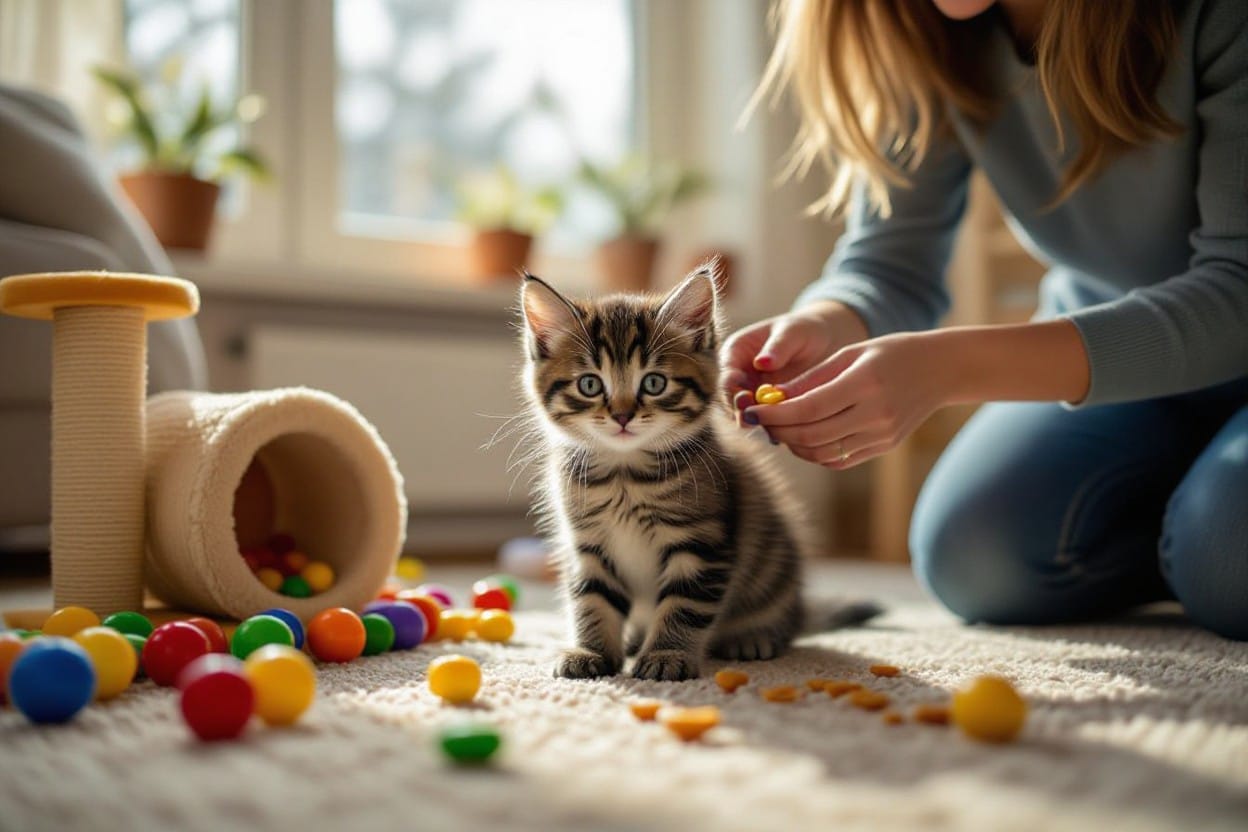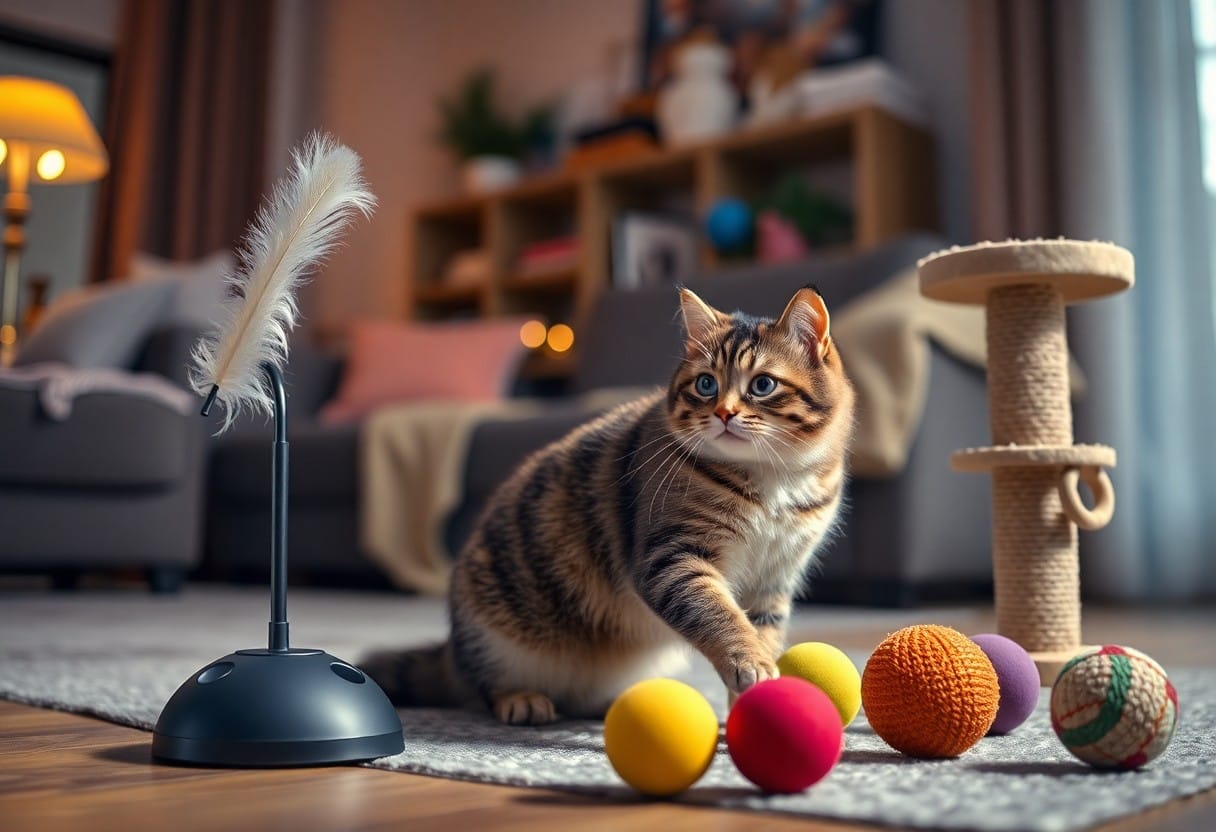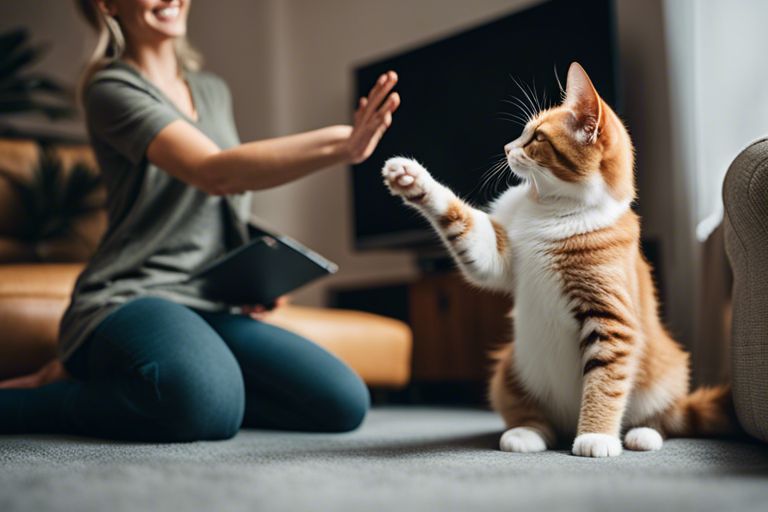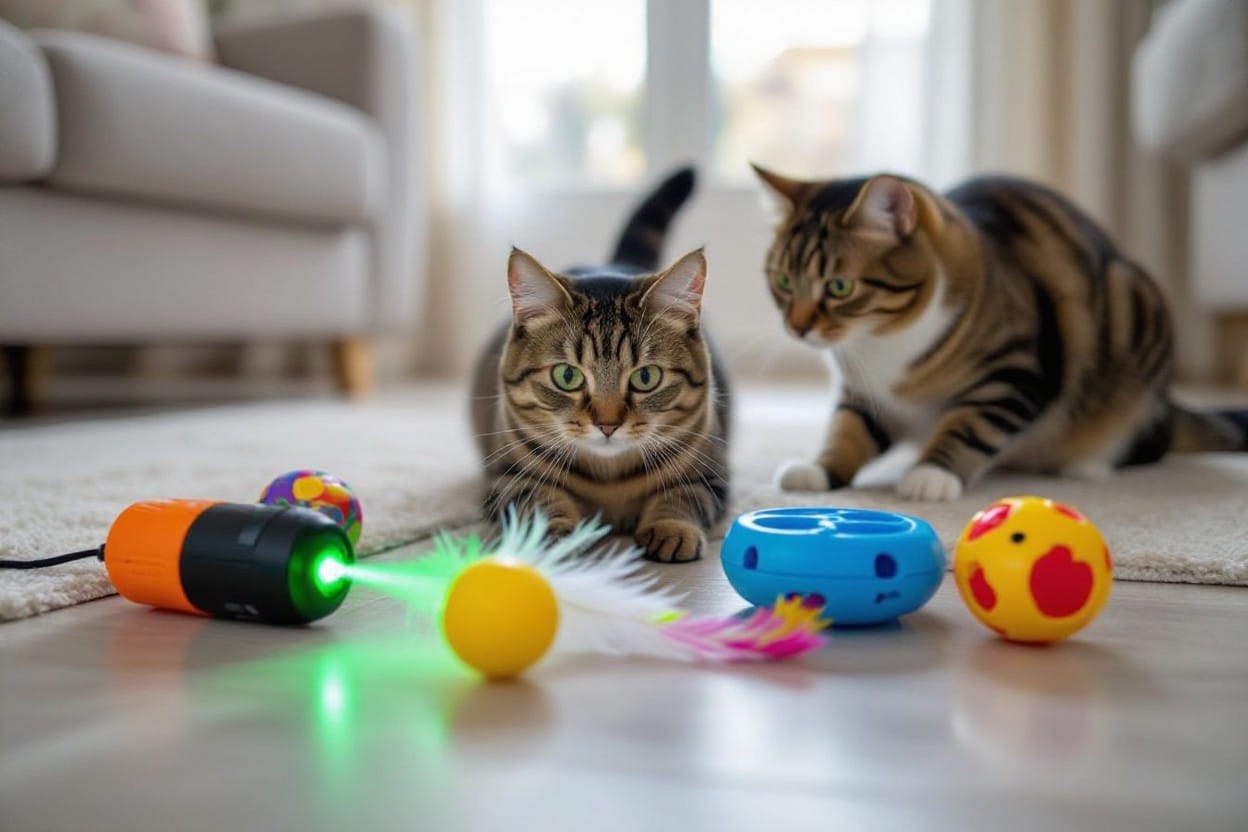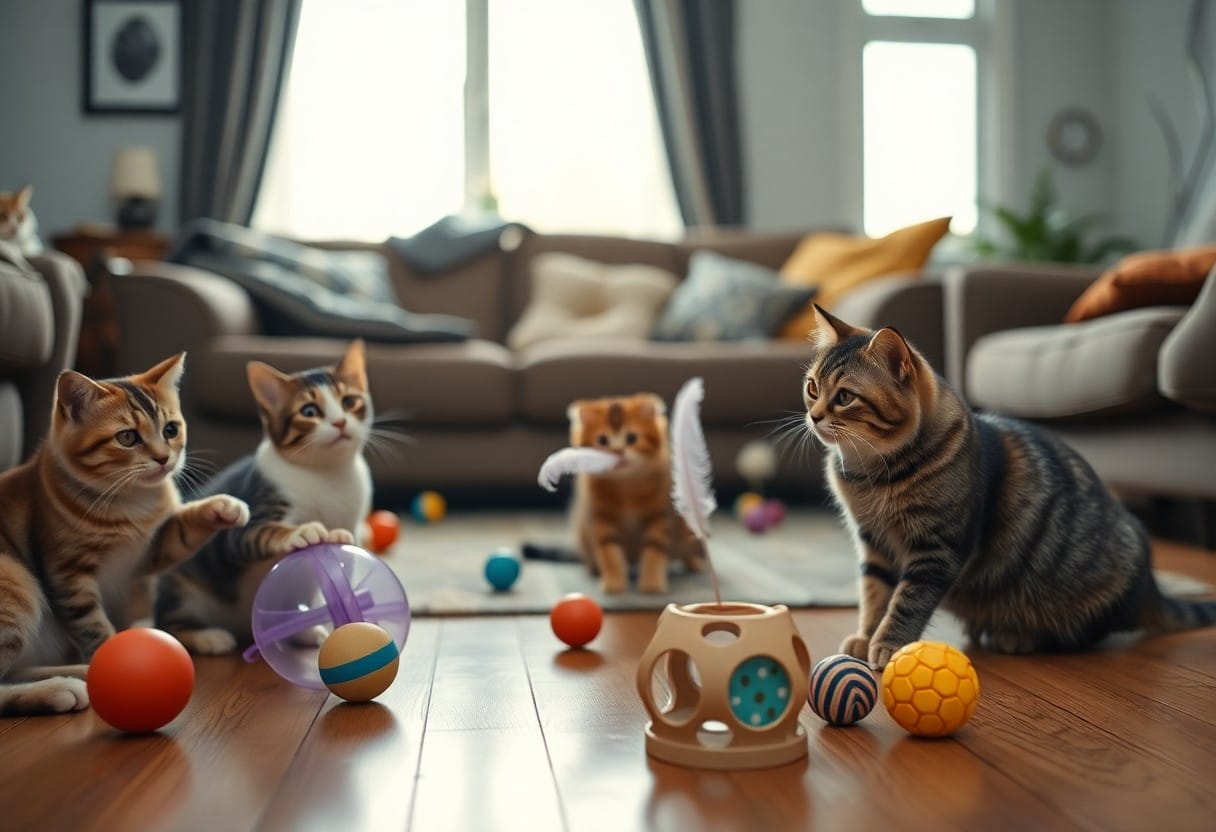This comprehensive guide will teach you effective methods and strategies for using cat treats to train your feline friend. By understanding the importance of positive reinforcement and reward-based training, you can successfully teach your cat new behaviors and tricks. With the right approach and delicious treats, you’ll have your cat responding to commands and cues in no time.
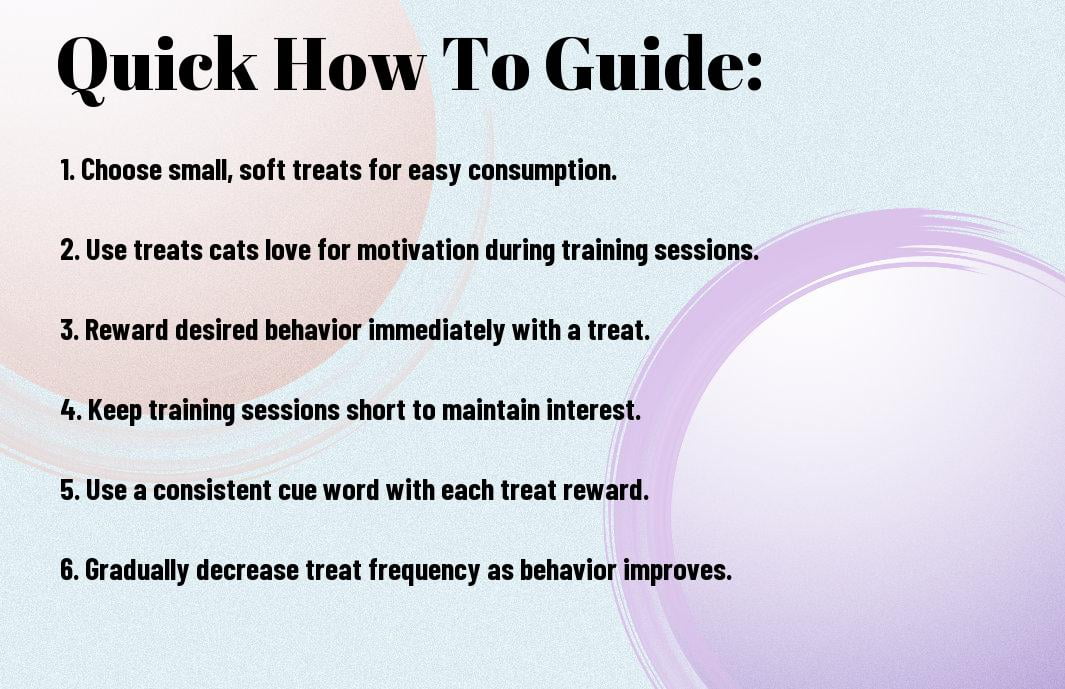
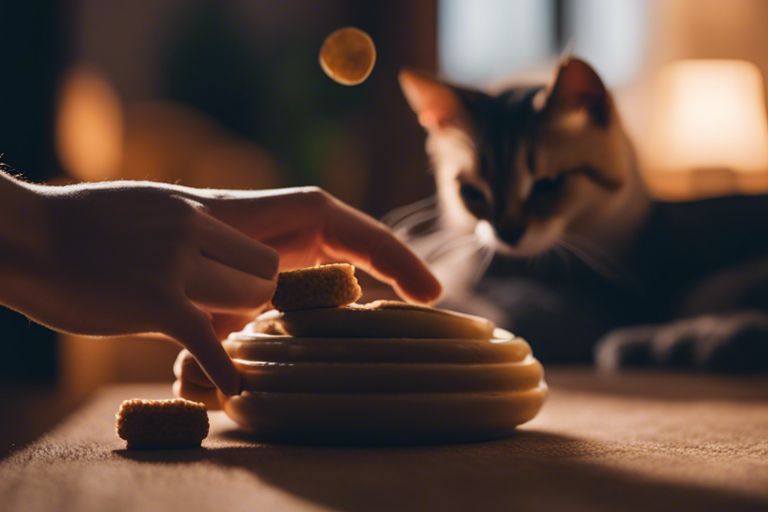
Understanding Your Cat
If you want to effectively train your cat using treats, it’s crucial to first understand your feline friend. Factors such as age, breed, personality, and past experiences can all influence your cat’s behavior. By recognizing these factors, you can tailor your training approach to suit your cat’s unique needs and preferences.
Factors Influencing Cat Behavior
- Age: Kittens are typically more playful and energetic, while older cats may be more laid back and less motivated by treats.
- Breed: Some breeds are more food-motivated than others, so it’s important to consider your cat’s breed when choosing treats for training.
- Personality: Just like humans, cats have their own personalities. Some may be more independent, while others are more social and eager to please.
- Past Experiences: Cats that have had negative experiences with treats or training in the past may be more reluctant to participate. It’s important to be patient and understanding with these cats.
Recognizing these factors will help you tailor your training sessions to be more effective and enjoyable for both you and your cat.
Identifying Your Cat’s Preferences & Motivations
To effectively use treats for training purposes, you need to identify what motivates your cat. Factors such as taste preferences, texture preferences, and portion size can all play a role in determining which treats will be most effective for your cat.
Another important aspect to consider is your cat’s individual preferences. Some cats may be more motivated by playtime or affection than treats, so it’s important to observe your cat’s behavior and adjust your training approach accordingly.
Choosing the Right Cat Treats
One of the keys to successful cat training is choosing the right cat treats. Cats can be picky eaters, so finding a treat that motivates them is crucial. There are various types of cat treats available on the market, each with its own benefits.
Types of Cat Treats
- Soft treats
- Freeze-dried treats
- Crunchy treats
- Dental treats
| Soft treats | Moist and easy to chew |
| Freeze-dried treats | Retain most of their nutrients |
| Crunchy treats | Help keep teeth clean |
| Dental treats | Aid in dental health |
After considering the types of cat treats available, it’s crucial to think about the factors that should influence your choice.
Factors to Consider When Selecting Treats
- Ingredients and quality
- Calorie content
- Texture and size
- Flavors
Treats play a crucial role in training your cat and should be chosen wisely. The quality of ingredients, along with the calorie content and texture, can impact your cat’s health and response to training. The flavors of the treats also play a significant role in motivating your cat during training sessions.
Homemade vs. Store-Bought Treats
When considering cat treats, you have the option of homemade or store-bought treats. Homemade treats allow you to control the ingredients and ensure freshness. On the other hand, store-bought treats provide convenience and come in a wide range of flavors and textures.
Homemade treats can be a great option if you want to avoid artificial additives or have a cat with specific dietary requirements. Store-bought treats, on the other hand, are convenient for busy pet owners and offer a variety of options to cater to different preferences.
Right Cat Treats for Your Feline Companion
To choose the right cat treats for your furry friend, consider their preferences, dietary needs, and any health issues they may have. Experiment with different types and flavors to see what motivates your cat the most during training sessions. Remember to use treats in moderation to prevent overfeeding and ensure a balanced diet for your cat.
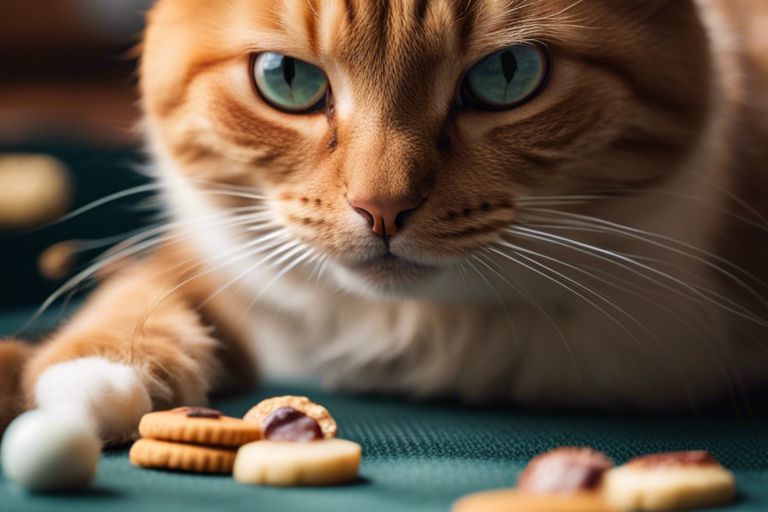
Principles of Positive Reinforcement
Basics of Positive Reinforcement
Keep in mind that the essence of positive reinforcement is to encourage desirable behavior by rewarding it. In the context of cat training, this means giving your cat a treat when they perform the desired action, such as sitting on command.
Timing and Consistency in Rewarding
You need to make sure you reward your cat immediately after they have carried out the desired behavior. This is crucial for them to associate the treat with the action they have just performed. Consistency is also key, as rewarding your cat every time they exhibit the behavior will help reinforce it.
Consistency in timing is necessary to prevent confusion in your cat. If you delay the treat or only reward the behavior sometimes, your cat may not understand which action is being rewarded, leading to inconsistency in their training.
How-to Create a Training Schedule
Setting Realistic Goals
With any training schedule, it’s important to start by setting realistic goals for your cat. Consider your cat’s age, breed, and current abilities when determining what you hope to achieve through training. Keep in mind that every cat is different, so it’s necessary to set goals that are attainable for your specific feline friend.
Tips for Routine Training Sessions
Little and often is the key to successful training sessions with your cat. Keep training sessions short and sweet to maintain your cat’s interest and focus. Consistency is also crucial, so aim to train your cat at the same time each day, when they are most alert and receptive to learning.
- Start each session with a positive interaction, such as offering a treat or a favorite toy.
- Use a quiet and calm environment to minimize distractions during training.
- End each session on a positive note, even if progress is slow.
The more you practice with your cat, the more they will come to enjoy and excel at training sessions. The key is to make training a fun and rewarding experience for both you and your furry companion.
- Consistency is key in reinforcing desired behaviors in your cat.
Another important tip for routine training sessions is to keep the sessions light-hearted and engaging. Use a variety of treats and praise to keep your cat motivated and eager to participate. Keep in mind, training should be a positive experience for your cat, so be patient and encouraging throughout the process.
Teaching Basic Commands Using Treats
Sit, Stay, and Come: Step-by-Step Guidance
Not all cats are naturally inclined to follow commands, but with the right motivation, even the most independent feline can learn basic commands like sit, stay, and come. Using treats as a training tool can be highly effective in teaching these commands. Here is a step-by-step guide on how to use cat treats to train your pet:
| Sit Command: | Hold a treat close to your cat’s nose and slowly move your hand up, allowing their head to follow the treat. As your cat lifts their head up and back, their bottom will naturally lower into a sitting position. Immediately reward them with the treat and praise. |
| Stay Command: | Ask your cat to sit, then show them the treat in your hand. Step back a few steps while saying “stay.” If your cat remains seated, reward them with the treat. Gradually increase the distance and duration of the stay command. |
| Come Command: | Call your cat’s name followed by the command “come” in an upbeat tone. When your cat approaches you, give them a treat and lots of praise. Repeat this several times to reinforce the behavior. |
Clicker Training Techniques
While using treats is effective, incorporating a clicker can further enhance the training experience. Clicker training is a form of positive reinforcement that marks the precise moment your cat performs the desired behavior. Here’s how you can implement clicker training techniques:
Understanding the association between the click sound and the treat is key. Start by clicking the clicker and immediately offering a treat. Repeat this process several times so your cat learns that the click sound signifies a reward. Once your cat understands this connection, you can use the clicker to mark the exact behavior you want to reinforce during training sessions.
Addressing Behavioral Challenges
How-to Use Treats to Discourage Bad Behaviors
One way to utilize cat treats for training purposes is to discourage bad behaviors. When your cat exhibits unwanted behaviors such as scratching furniture or biting, using treats strategically can help redirect their attention. For example, when you catch your cat in the act of scratching the couch, gently redirect them to a scratching post and reward them with a treat when they use it instead. This positive reinforcement can help teach your cat the appropriate behavior while deterring the undesirable one.
Managing Treats and Training Balance
To maintain a healthy balance in your training sessions, it’s crucial to manage the quantity and quality of treats you use. While treats can be a powerful motivator for cats, overdoing it can lead to weight gain and health issues. Make sure to use small, low-calorie treats and consider them as a special reward rather than a regular meal replacement. Additionally, vary the treats you use to keep your cat engaged and prevent them from getting bored or disinterested in the training process.
This approach will help ensure that your cat remains motivated during training sessions while also promoting their overall well-being.
Keeping Your Cat Healthy and Happy
Monitoring Treat Intake for a Balanced Diet
While using cat treats for training can be highly effective, it’s important to monitor your cat’s treat intake to ensure they are still receiving a balanced diet. Treats should only make up a small percentage of your cat’s daily caloric intake to prevent nutritional imbalances. Be mindful of the ingredients in the treats you are using and opt for high-quality, meat-based options over ones filled with fillers and artificial additives.
Knowing When to Phase Out Treats
Monitoring your cat’s weight and overall health is crucial when using treats for training. If you notice your cat gaining weight or becoming disinterested in their regular food due to excessive treat consumption, it may be time to phase out treats or adjust the frequency of rewards. Always prioritize your cat’s long-term health over short-term training goals.
Keeping a close eye on your cat’s body condition and behavior will help you determine when it’s time to reduce treat intake. Be mindful of, the ultimate goal is to have a well-behaved and healthy cat, so be sure to adjust your training methods as needed to achieve this balance.
To wrap up
Presently, using cat treats for training purposes can be an effective way to reinforce positive behaviors in your feline companion. By selecting high-quality and flavorful treats, you can keep your cat motivated and engaged during training sessions. Remember to use treats sparingly and in moderation to prevent overfeeding and maintain a healthy diet for your cat.
Consistency and patience are key when using cat treats for training, as it may take time for your cat to learn new behaviors. By incorporating treats as a reward for desired actions, you can help strengthen the bond between you and your cat while promoting good behavior. With the right approach and plenty of praise, your cat will be learning new tricks in no time with the help of their favorite treats.
FAQ
Q: Why Should I Use Cat Treats for Training Purposes?
A: Cat treats are a great incentive for training as they provide positive reinforcement. Cats are motivated by food, making treats an effective tool for teaching new behaviors or tricks.
Q: What Types of Cat Treats Are Best for Training?
A: Soft treats are ideal for training purposes as they can be easily broken into smaller pieces and quickly consumed by your cat. Look for treats that are moist and aromatic to hold your cat’s attention.
Q: How Often Should I Use Treats During Training Sessions?
A: Treats should be used sparingly during training sessions to prevent overfeeding. Offer small pieces of treats as rewards for correct behavior, gradually reducing the frequency as your cat learns the desired behavior.
Q: How Can I Prevent My Cat from Getting Bored with Treats During Training?
A: Rotate between different types of treats to keep your cat engaged and prevent boredom. You can also use a variety of treats with different flavors or textures to maintain your cat’s interest.
Q: Are There Any Treats I Should Avoid Using for Training Purposes?
A: Avoid using treats that are high in fat, sugar, or artificial additives for training purposes. These treats can be unhealthy for your cat if used excessively. Stick to high-quality, nutritious treats to ensure your cat stays healthy while training.
